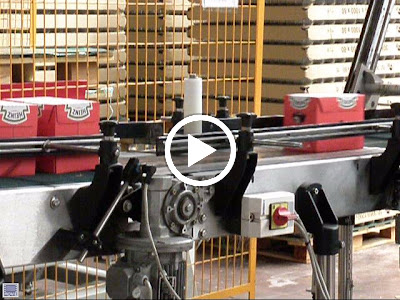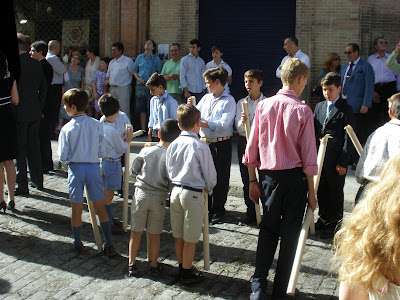It was a spontaneous decision; a three day weekend and nowhere to go. So, where to go? Barcelona? Malaga? Lagos, Portugal? It was a decision that took a while to make; there were many factors to consider: cost, time, what to do when we got there? Monkeys, a wondrous cave, and an English speaking territory eventually won my group over. After throwing together plans and buying bus tickets, we were set to go to Gibraltar.

Saturday morning. We dragged our sleepy bodies out of bed and got to the bus station to catch our 4 hour bus ride to La Linea, a small town on the border of Spain, not even 5 minutes from the Gibraltar border. After arriving a little after 2 in the afternoon, we found our hostel, dropped our stuff off in our rooms, and scurried over the border to Gibraltar with a quick flash of our passports to a security guard. With more than several thousand people passing through the border each day, they seem to be rather lax with their security.
Once in Gibraltar, we instantly ran into a tour guide, offering to drive us around “The Rock” and show us all the sites. We chose to cough up the 25€ rather than walk aimlessly for over 3 hours on the enormous rock that looked like someone had just dropped it into the Mediterranean Sea. Our tour guide had a quirky English accent and a dry sense of humor that managed to bring out chuckles from the group. I could tell we had already made a great decision.
First stop, the Pillars of Hercules. It gave an amazing view to the Mediterranean Sea with the numerous boats moving in and out of the port, and out of the misty fog covering the Rock, we could barely see the top of a mountain in Morocco. It was breathtaking. And cold, really cold. After having our fill, we filed back into the van and made our way to the next stop, and my personal favorite, St. Micheal’s Cave. A large network of limestone caves with numerous stalagmites and stalactites, and even a concert hall nestled into one of the sides. It was indescribable and amazing. All I could do was stare in awe at the high ceilings and just imagine.

The next stop on our tour was the most fun, the monkeys. The trick to getting them to interact with you is sweets. A few peanuts and a trusting face, and the monkeys were jumping all over you and posing for pictures. It was scary, but also a whole bunch of fun. You were standing there one moment instantly, and then the next moment, you had a monkey launching itself onto your head! After spending nearly 30 minutes interacting with these playful creatures, our guide ushered us back into the van. Funnily enough, the monkeys didn’t think it was time for us to go, and proceeded to jump onto the van as we slowly pulled away; one even attempted to climb into the van! Eventually enough they jumped off and we drove to the other side of the Rock to visit the historical Great Siege tunnels.
\

A bit of history behind Gibraltar: the Spanish attempted several times to regain the Rock from the British during the 1700s, but with the Rock on the side of the British, it was near impossible. The British hand carved tunnels into the limestone, now known as the Great Siege tunnels, and placed cannons inside, using it to stop the Spanish from crossing over the only land that connected Spanish and the Rock at the time. Even today, the Spanish are still attempting to recover the Rock. However, in a recent poll, 99.8% of the Gibraltar community voted “NO” to Spanish sovereignty. Personally, I like them British.
After the Great Siege tunnels, we agreed to be dropped off at the Moorish Castle, which had a nice garden with a small pond full of goldfish, and a great view of the town of Gibraltar. Afterwards, we headed into town for dinner and found a pleasant plaza that served a delicious plate of fish and chips. Spontaneously, we decided we wanted to watch the sun disappear on the horizon over the Atlantic, so we paid the bill, in pounds, and scurried to the west side of town. Luckily, we got there about 30 minutes before the sunset and found a pleasant spot along the rocky coast and dipped our sore feet into the cold, clear water and watched the day grow old. It was a great time spent laughing about the day and enjoying each other’s company in a foreign territory. Anyplace feels at home, as long as you’re in good company. After watching the sunset, we dragged our lazy butts back across the border to our hostel, thoughts of what the next day would bring for us running in our heads.



























































